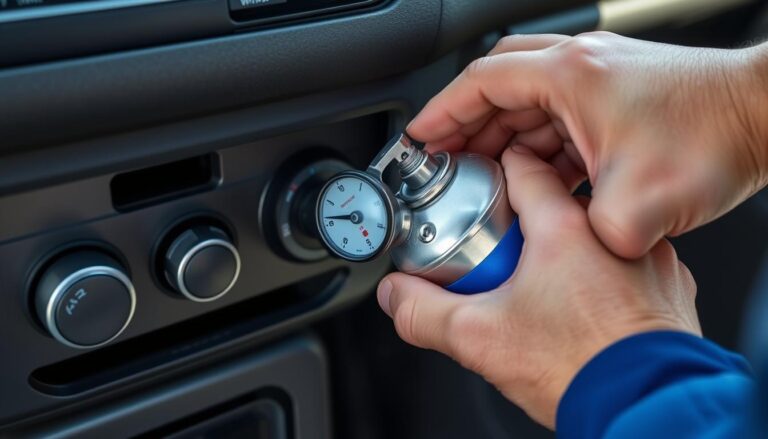A white F-150 leveled on 33-inch tires is a popular truck modification that combines aesthetics with some off-road capability. Leveling kits raise the front suspension to match the rear, eliminating the factory rake. Upsized tires offer a more aggressive look and slightly improved ground clearance.
Introduction
The Ford F-150 is a perennial favorite among truck enthusiasts. Modifying these trucks for looks and performance is a popular pastime. One common customization is to level a white F-150 and fit it with 33-inch tires. But what exactly does this involve, and is it the right choice for your truck?
This blog post dives into the world of white F-150s leveled on 33s. We’ll explore the benefits and drawbacks, discuss different leveling kit options, and provide insights to help you decide if it’s the perfect upgrade for your truck.
Key Takeaways
- Leveling kits raise the front suspension of an F-150 to match the rear, eliminating the factory rake.
- 33-inch tires offer a more aggressive look and slightly improved ground clearance.
- This modification can enhance aesthetics and provide some off-road capability.
- Consider potential drawbacks like speedometer calibration changes and potential warranty implications.
- Choose leveling kit components based on your budget, desired ride quality, and lifting height.
What Does “Leveled on 33s” Mean?
Let’s break down the terminology used to describe this popular truck modification:
- Leveled: Stock F-150s often have a factory rake, meaning the rear sits slightly higher than the front. Leveling kits raise the front suspension to match the rear, creating a more level appearance.
- 33s: This refers to the diameter of the tires being used. Upsizing from the stock tire size to 33 inches provides a more aggressive off-road aesthetic and slightly increased ground clearance.
Benefits of a Leveled F-150 on 33s
There are several reasons why this modification is so popular:
- Improved Aesthetics: A leveled stance and larger tires create a more aggressive and imposing look, a key factor for many truck owners.
- Slight Off-Road Capability: While not a dedicated off-road build, the increased ground clearance from 33-inch tires allows for better handling of uneven terrain compared to stock.
- Maintained On-Road Performance: Leveling kits typically don’t significantly impact handling characteristics, allowing for a good balance between aesthetics and everyday driving.
Drawbacks to Consider
Before diving in, it’s important to be aware of some potential downsides:
- Speedometer Calibration: Larger tires can cause speedometer inaccuracies. Calibration may be needed to ensure your speedometer reflects your actual speed.
- Warranty Considerations: Modifications can potentially void certain parts of your truck’s warranty. Check with your dealership before making any changes.
- Potential Handling Changes: While some leveling kits maintain on-road performance, certain types or poorly installed kits might affect handling characteristics.
Choosing the Right Leveling Kit
Leveling kits come in various options. It’s crucial to choose one that suits your needs:
- Spacer Kits: These are typically the most affordable option, using spacers to raise the front suspension. They offer a simple installation but might not provide the best ride quality.
- Strut/Coilover Kits: These kits replace the factory front struts or coilovers with lifted versions. They generally offer a better ride quality than spacer kits but are more expensive.
Factors to Consider When Choosing a Kit
- Budget: Spacer kits are budget-friendly, while coilover kits provide better ride quality but come at a higher cost.
- Desired Lift Height: Leveling kits typically raise the front suspension 2-3 inches.
- Ride Quality Priorities: If a smooth ride is important, consider coilover kits over spacer kits.
Conclusion: Is a Leveled F-150 on 33s Right for You?
This modification is popular and visually appealing, offering a balance between aesthetics and some off-road capability. However, consider the potential drawbacks, speedometer calibration needs, and warranty implications. Evaluate your budget, desired ride quality, and lifting height to choose the right leveling kit if you decide to proceed.
FAQ
Q: Will my tires rub after leveling?
A: The possibility of tire rubbing depends on several factors, including the specific leveling kit you choose, the offset of your wheels, and the width of your 33-inch tires. In some cases, minor trimming of the fender liner might be necessary to prevent rubbing, especially during full steering lock or when going off-road.
Q: Can I level my F-150 myself?
A: Yes, it is possible with sufficient mechanical skills and the right tools. However, leveling a truck involves working with suspension components, which can be dangerous if not done correctly. If you’re unsure of your abilities, it’s always recommended to seek professional installation to ensure everything is installed correctly and safely.
Q: Are there any long-term reliability issues after leveling?
A: Generally, a properly installed leveling kit from a reputable brand should not cause major long-term reliability issues. However, it’s important to note that any modification can put slightly more stress on certain components. You may experience slightly faster wear on front-end suspension parts compared to a stock truck. Maintaining proper alignment after leveling is crucial to minimize wear.
Q: Will leveling my F-150 affect towing and hauling?
A: Most leveling kits should have a minimal impact on your F-150’s towing and hauling capabilities. However, if you frequently carry heavy loads or tow large trailers, it’s worth considering a more robust suspension solution that maintains the load-carrying characteristics of the factory setup.
Q: Besides the leveling kit, are any other parts needed?
A: Depending on your truck’s year and the specific kit, you might need an alignment kit to ensure proper alignment after the suspension is modified. Additionally, if you experience speedometer inaccuracies due to the larger tires, a speedometer recalibration module might be required.


